It was lovely to have a sleep in this morning! We were booked on a tour to the Weiliczka Salt Mine and weren’t due to be collected until 9.50am. You may never have heard of it but it is one of the most popular tourist attractions in Poland, is registered on the UNESCO World heritage list and is visited by over a million people each year!
The driver collected us a little early and we drove out to the mines (only a 25 minute drive) in a small van with 6 other passengers. Our driver then delivered us into the hands of one of the official mine guides in a larger group of around 30. She guided us down into the mine and along the tourist route for the next 2 1/2 hours. However the mines are so huge we saw only 1% of the entire mine, the tunnels are over 287 km long! We started with a climb down a timber staircase of over 300 steps , the view down the middle of the staircase was a bit eerie. Part way down I had the weird feeling that I’d stumbled into an Escher drawing and would shortly find myself climbing out the top!
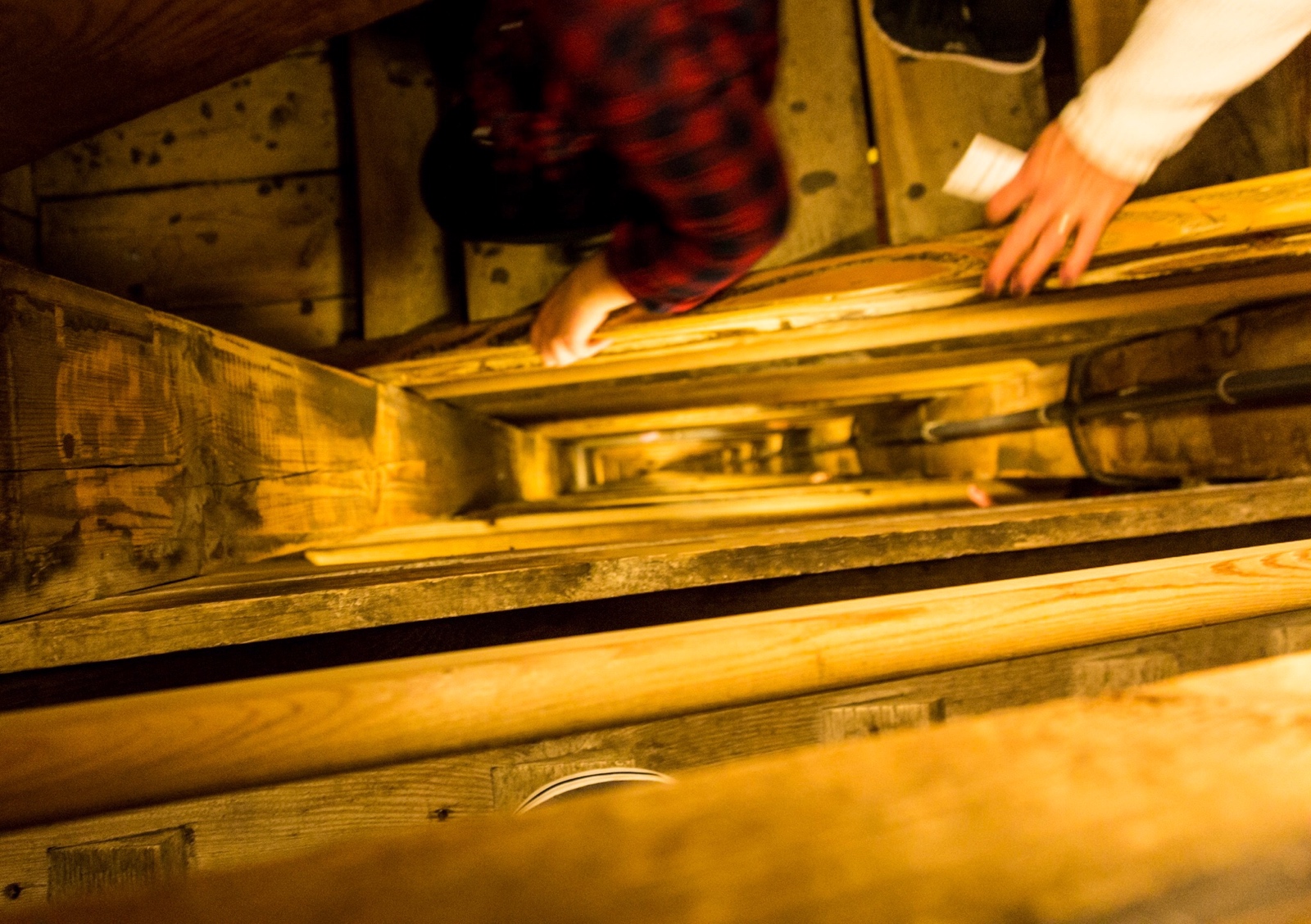
Looking down, down, down…
The salt in the mine is grey, due to impurities. In places it looks like polished granite but once we were down there the walls , ceiling and floor were all solid salt. Opened in the 13th century, the mine produced table salt continuously until 2007, as one of the world’s oldest salt mines in operation. Over the years the miners carved a series of statues , all from solid salt, throughout the mine and even carved out four seperate chapels.

Kinga, a Hungarian princess who became a saint
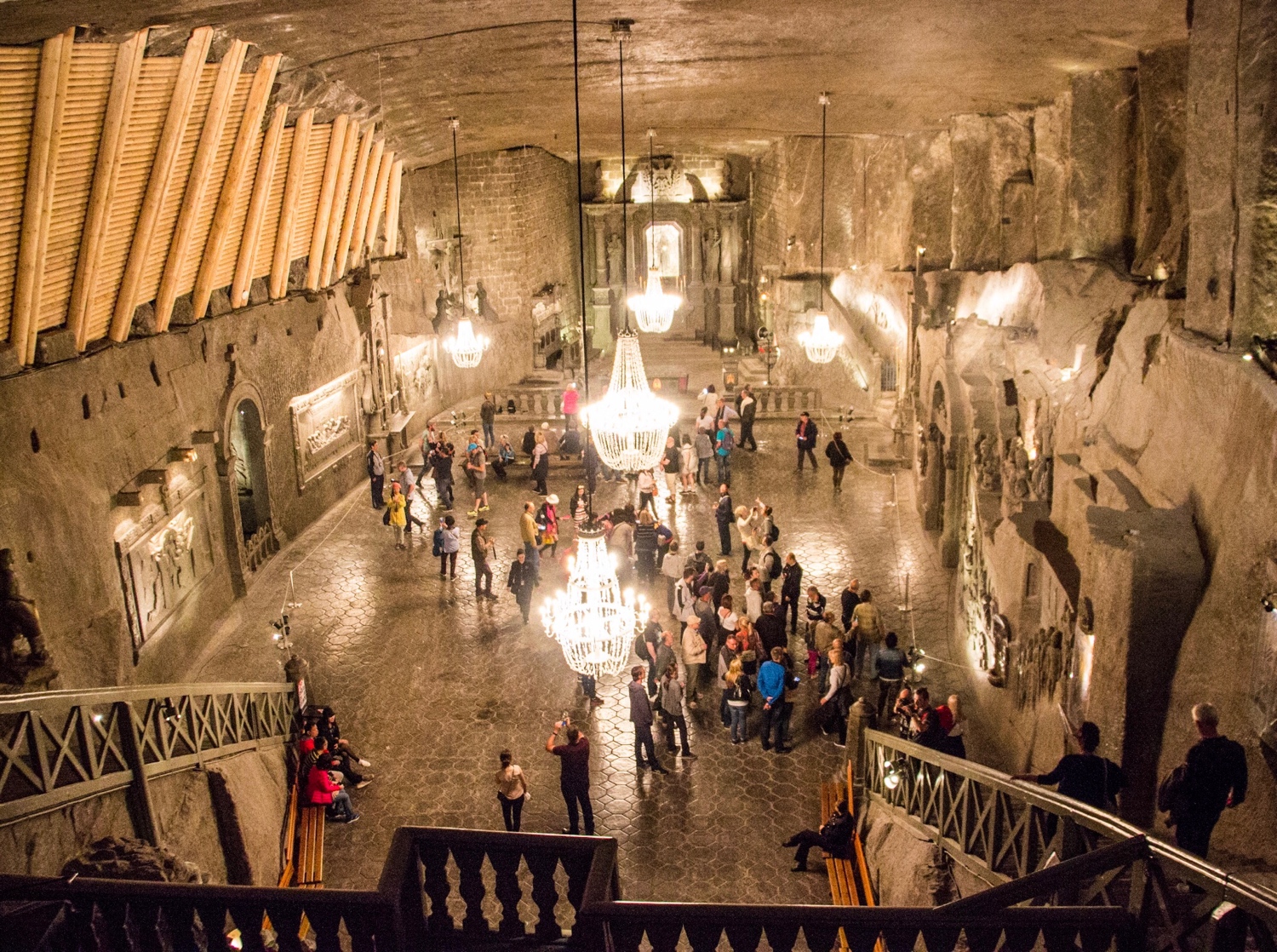
St Kinga Chapel, mass is held here every Sunday.

The chandelier is made entirely of salt crystals!
There are several underground lakes, each one saltier than the Dead Sea

Lake
Fortunately we could use the miners lifts to get us back out of the mine, a bit of a sqeeze with 9 of us crammed into the lift for the ride up. It forced you to get friendly with your fellow lift passengers, who we learned were from Canada. We have met so many Canadians on this holiday! We were dropped back into town by 1pm and then set off to do a more thorough exploration of the Old Town.
Back in Rynek Glowny we had a better view today as being a Monday, many of the market stalls were closed up. We had a good view of the Cloth Hall, as well as the multitude of carriages plying their trade. The horses really are beautiful.

Cloth Hall plus Horse carriage
Gae and Greg had visited Krakow before the cruise, and Gar had told us that the interior of St Mary’s Cathedral was one of the most spectacular she had seen so we made a beeline for the ticket office to pay for entry plus 5 zloty for the privilege of taking photos. It was well worth it, the interior with its rich blue ceiling and vibrant painted walls was amazing. The stunning alterpiece is considered to be one of the best medieval woodcarvings in existence.
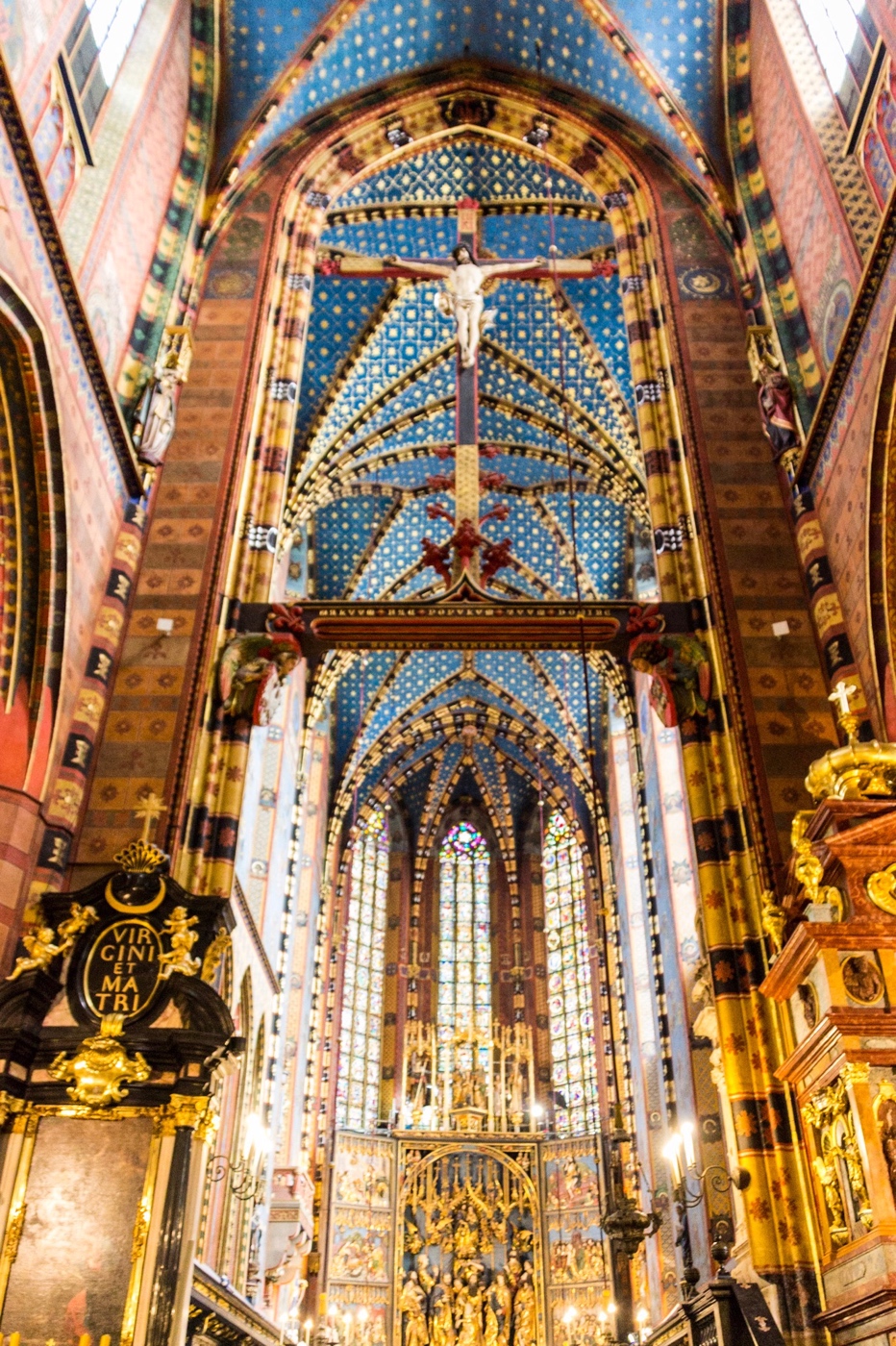
Stunning!
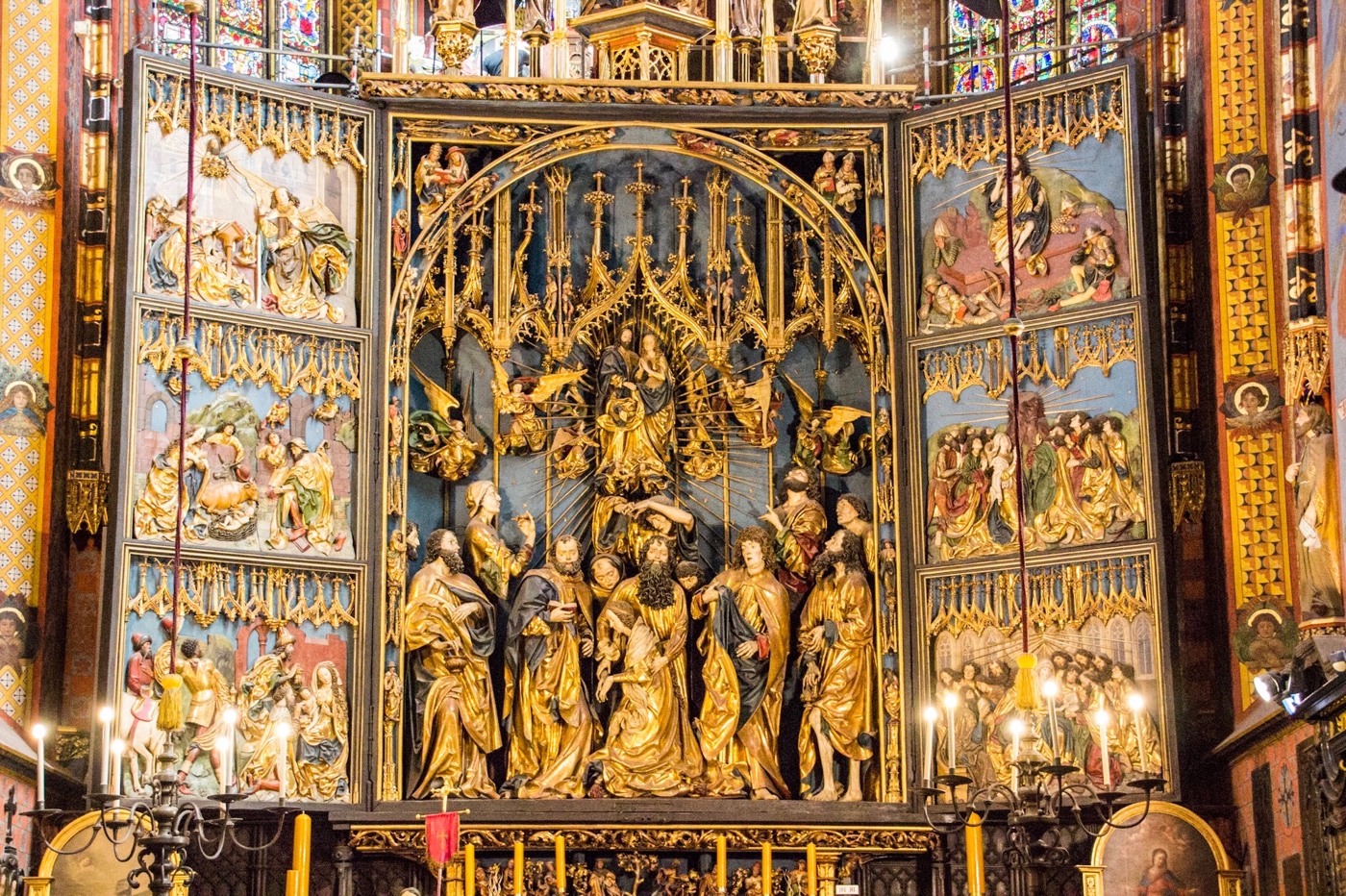
Amazing altarpiece
On the other side of the square is a far more modern artwork, the big head is big enough for an adult to stand inside, I know because I did 😊
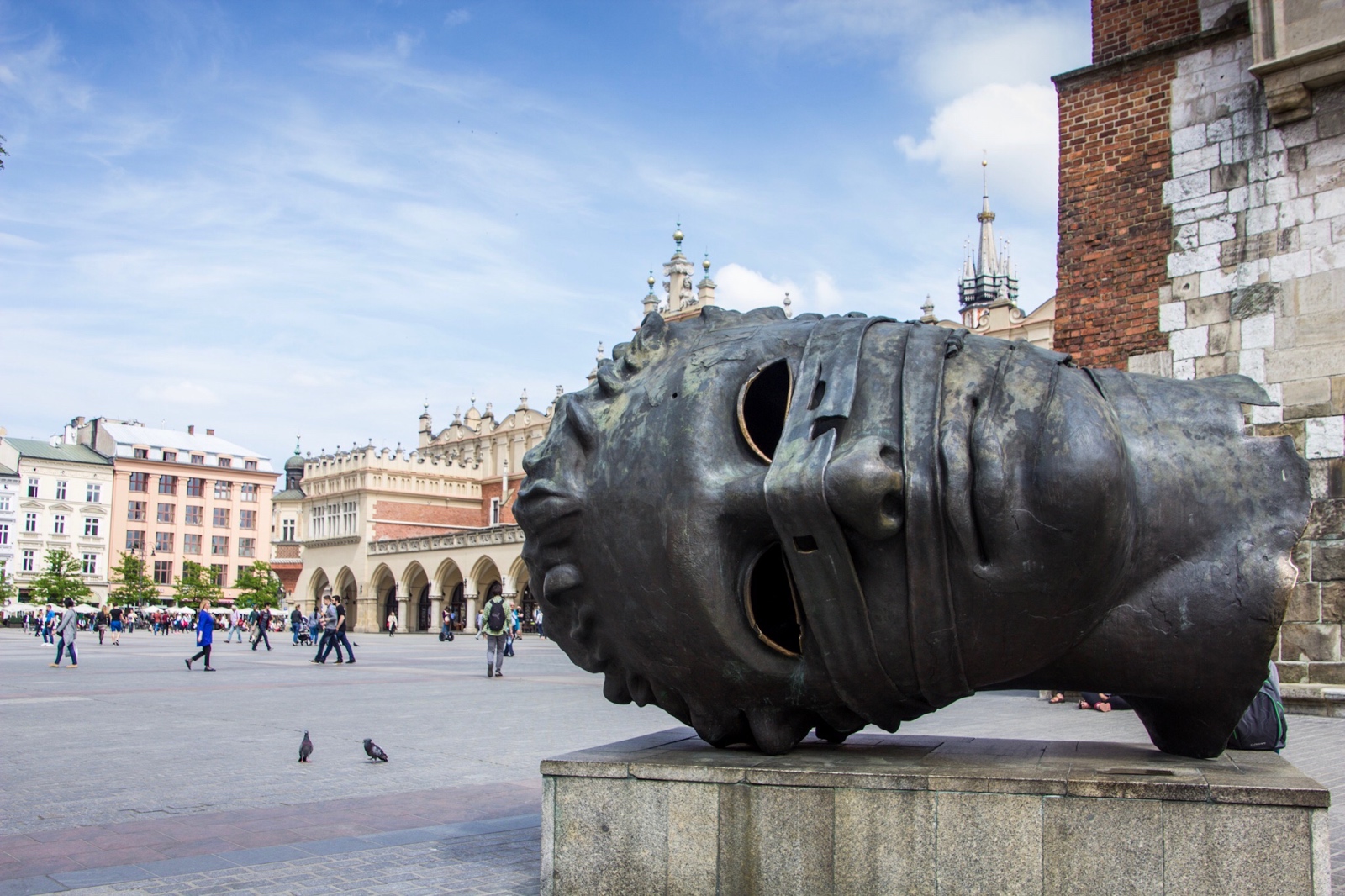
It’s a big head!
We left the square and walked down the “Royal Way” past Mary Magdalene Square, which looks like it would be right at home in Italy. Along the way we followed, walked past and crossed paths with a score of school groups, ranging from early primary to late high school age. Yesterday (Sunday) Krakow seemed to be a little overrun with party boy groups ( because its so cheap its a popular destination for boys weekends from all over Europe) . Given the choice , I prefer the schoolkids!

Eventually we reached the ramp that takes you up Wawel Hill, which is sacred ground to the Polish people. A castle has stood here since the beginning of Poland’s recorded history and its Cathedral is the equivalent of Westminster Abbey for the Poles. Part way up the ramp is a statue of Tadeus Kosciuszko astride a horse, the Pole that our tallest mountain is named for.
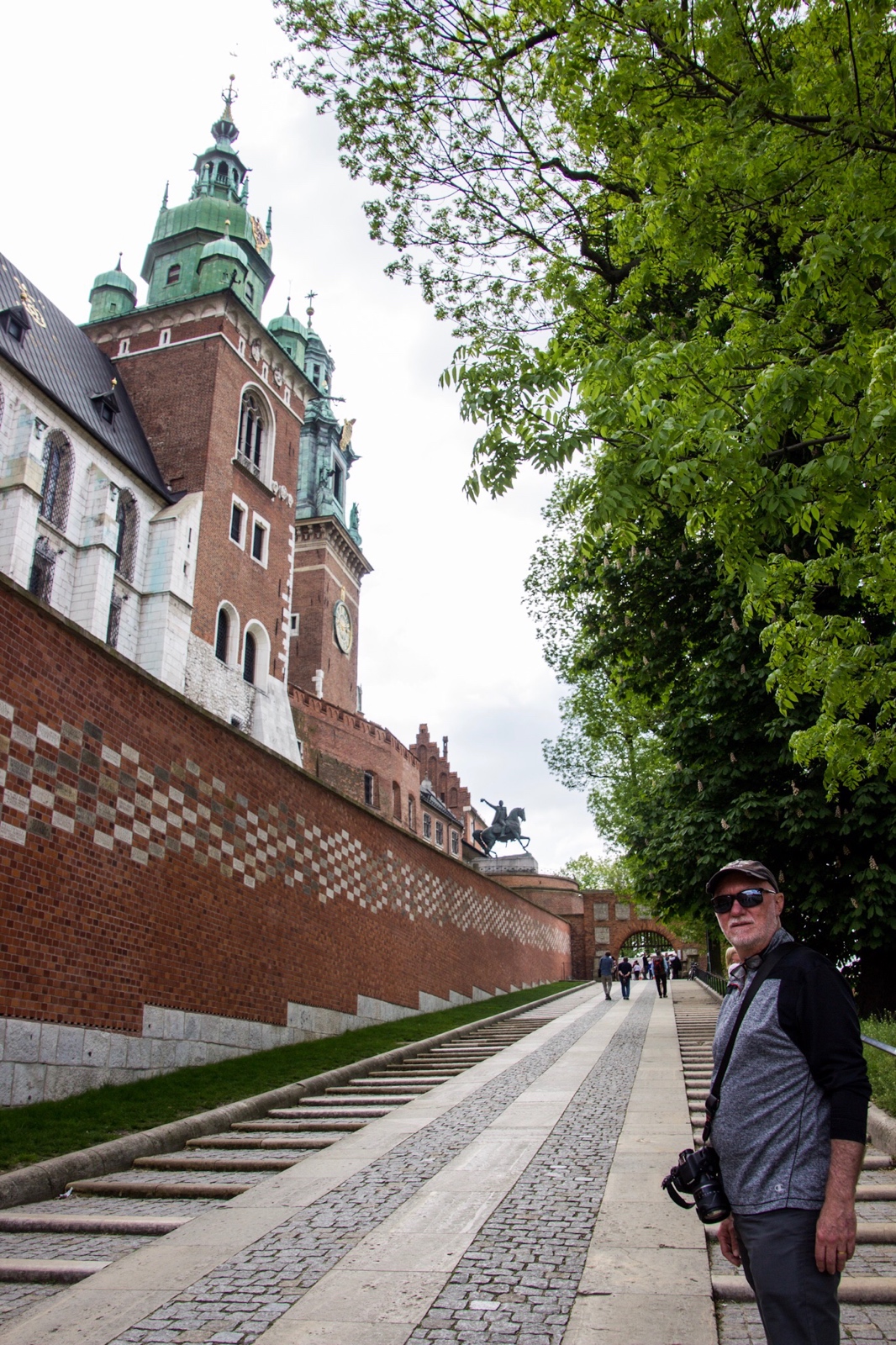
Neil and Kosciusko
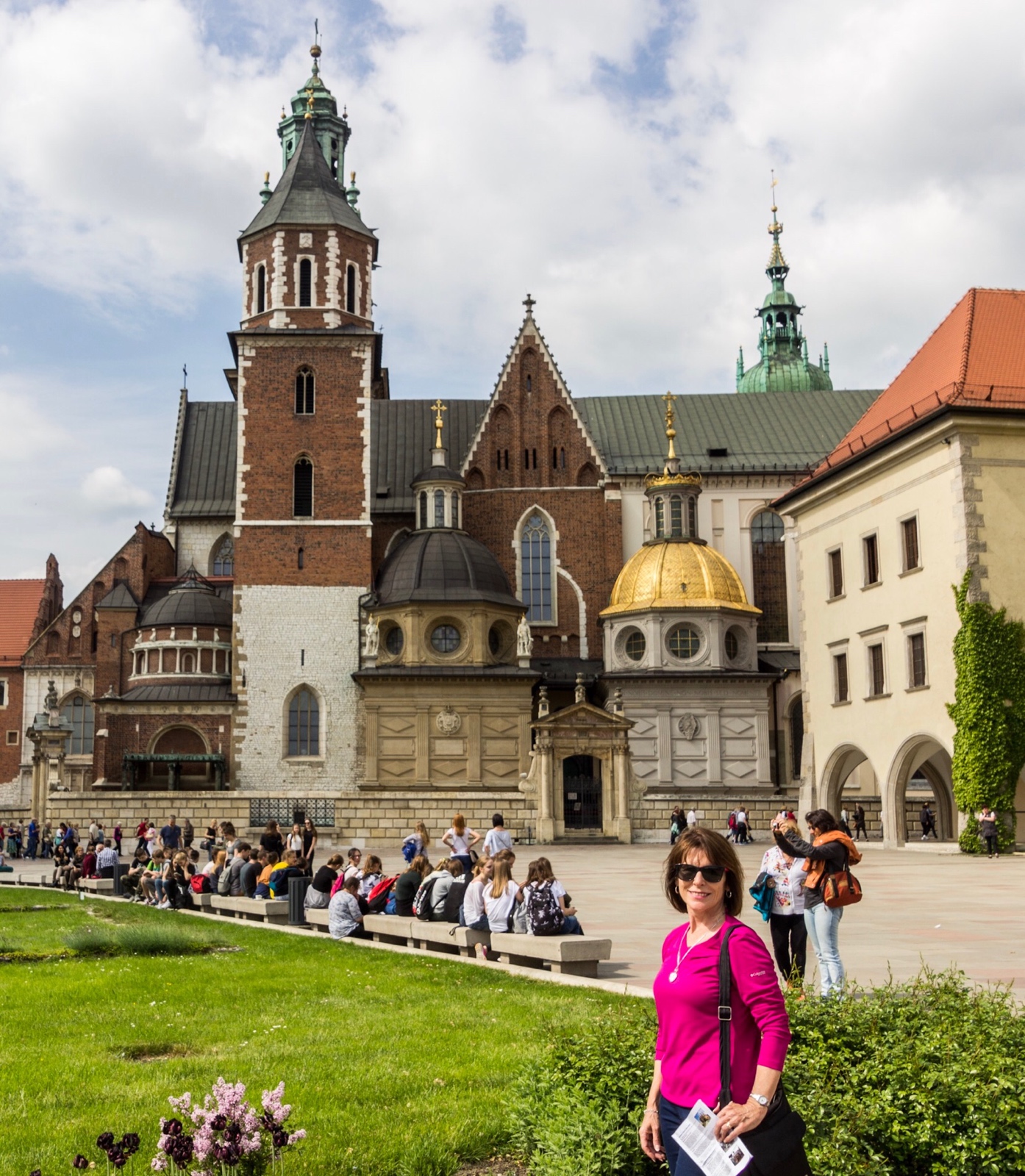
Wawel Cathedral has a hodge-lodge of chapels tacked on the side from various centuries.

Plenty of space to move on Wawel Hill
Down below the hill on the edge of the river is a fire breathing statue of a dragon. The legend goes he was killed by Prince Krak who went on to found Krakow. The statue belches flame every 4 minutes but the poor dragon was no match for the hordes of schoolkids that were gleefully climbing all over him.

You can just see the yellow flame coming from his mighty jaws
It was close to 4 pm by now and we hadn’t eaten since breakfast so we found a nice cafe cafe on the main square for a leisurely late lunch/early dinner. My pork schnitzel was delicious, and my cappucino came with a shot of some very tasty chocolate liquer, yum! We watched the passing parade of people and listened to the range of languages and accents around us, including a family group of poms speaking the broadest Yorkshire.
The carriages trotted past regularly and we listened to the “hejnal” bugle played every hour from the top of the cathedral. It is cut short each time to commemorate the poor bugler that was shot in the neck in medieval times when he was playing his warning call to the town of arriving invaders. Neil, the cynic, is convinced its a recording but I like to think there really is a chap up there with a horn every hour. 😊
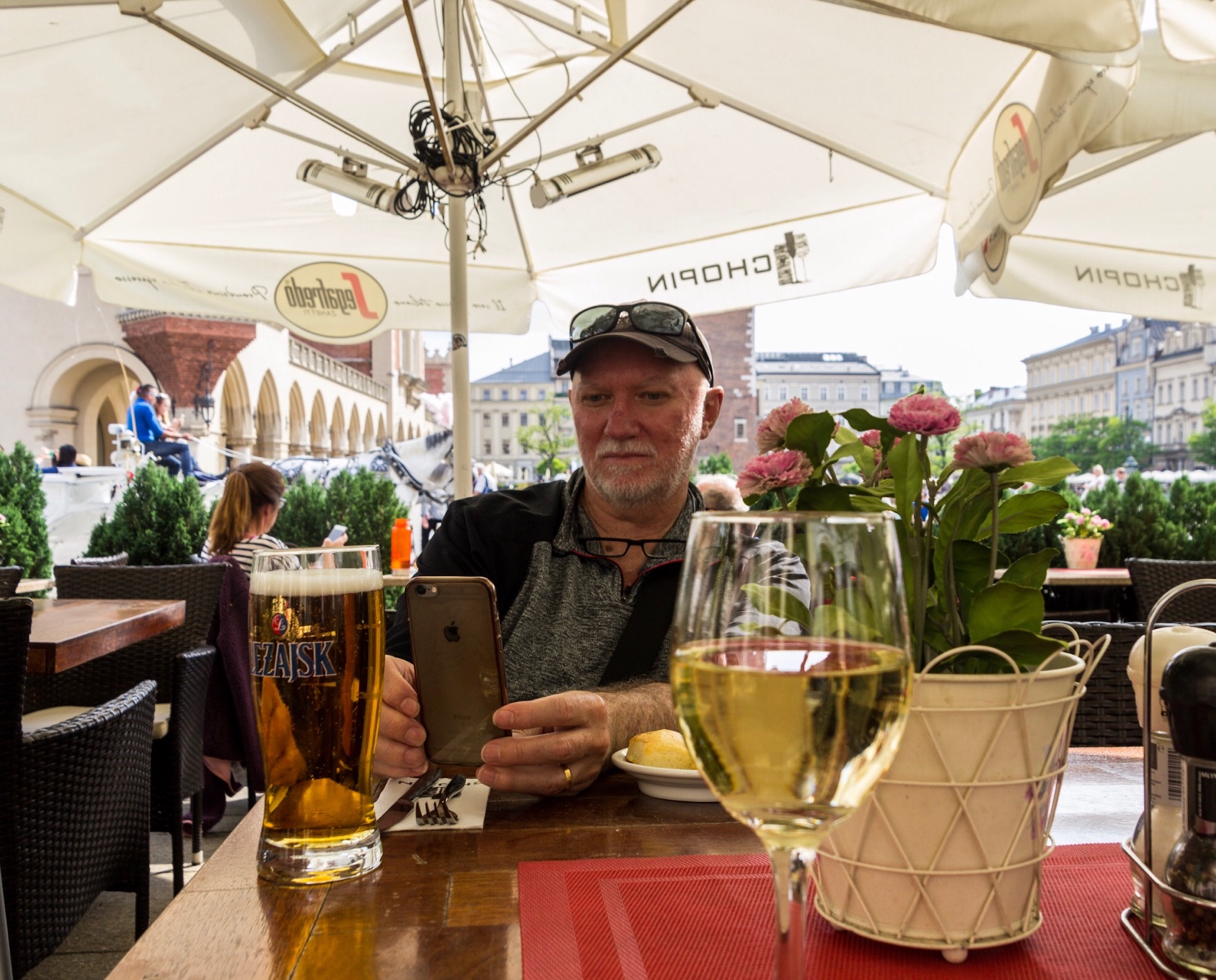
Neil recording today’s beer, a good Polish drop. You can see a carriage going past behind his right shoulder.
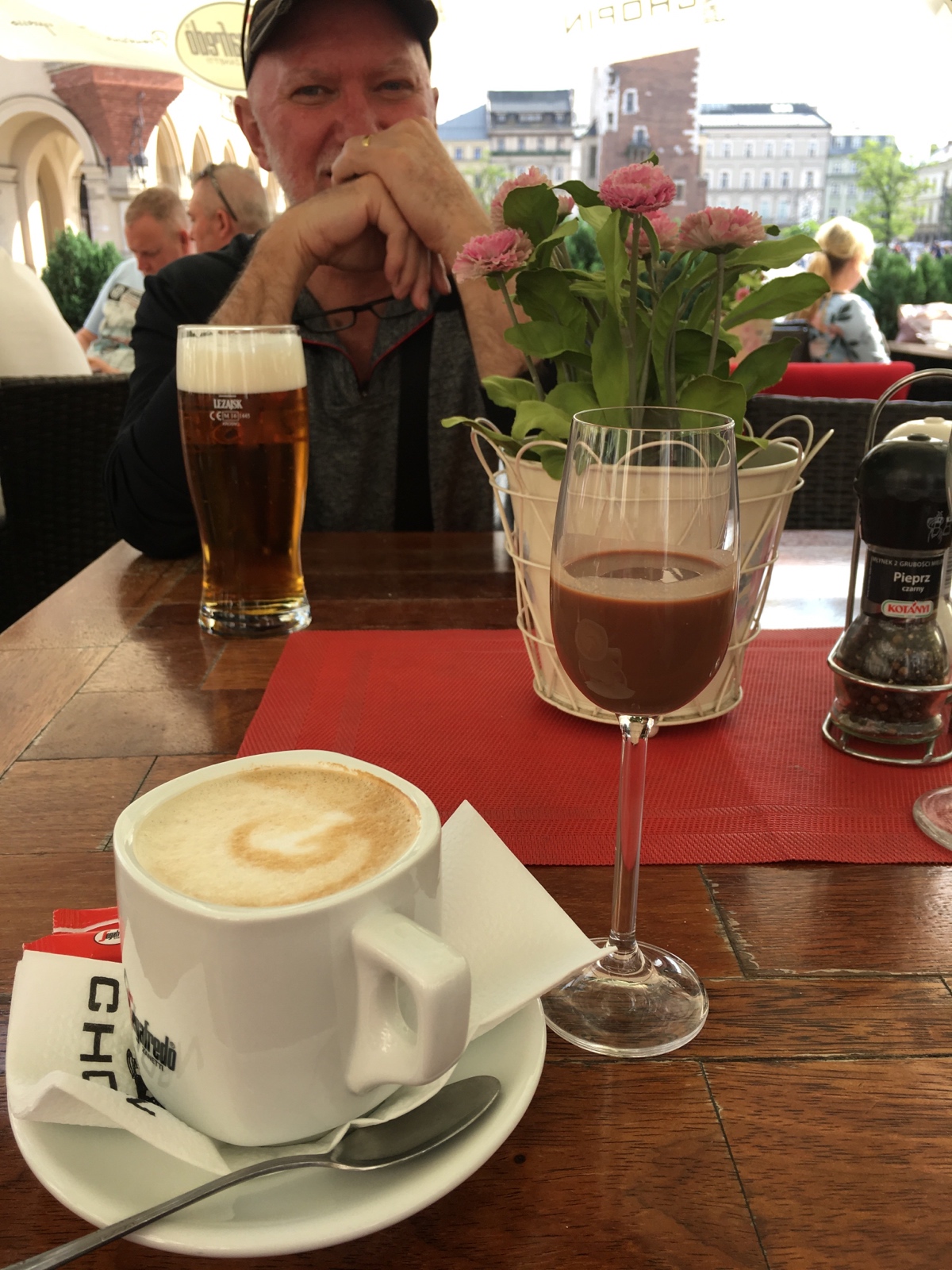
I could get used to having my chocolate served this way with the cappuccino!
A final stroll around the streets near our hotel took us out the Florian Gate and past the Grunwald Monument, a rather grisly looking one that records the defeat of Teutonic invaders by the Poles in 1410.
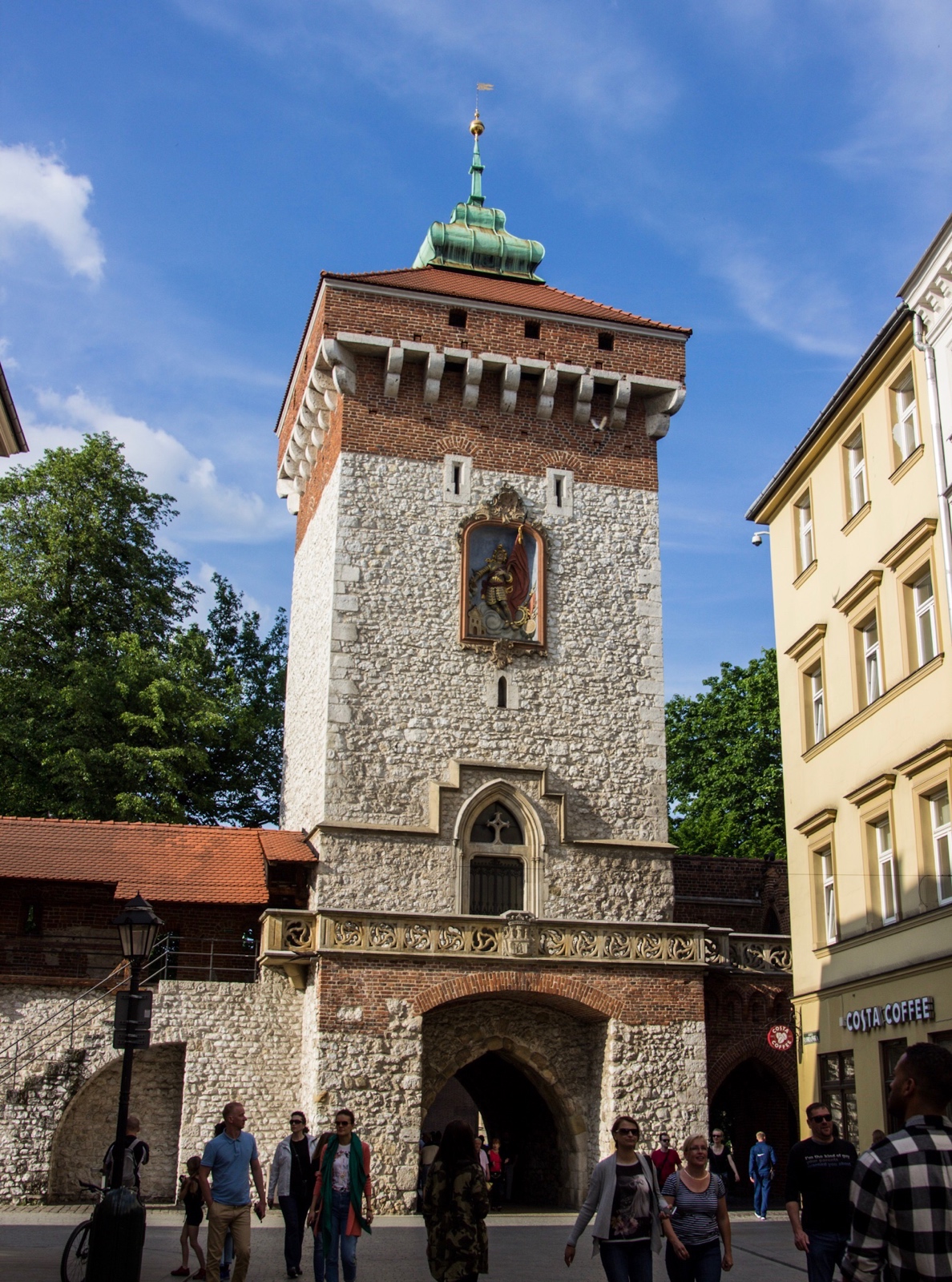
Florian gate
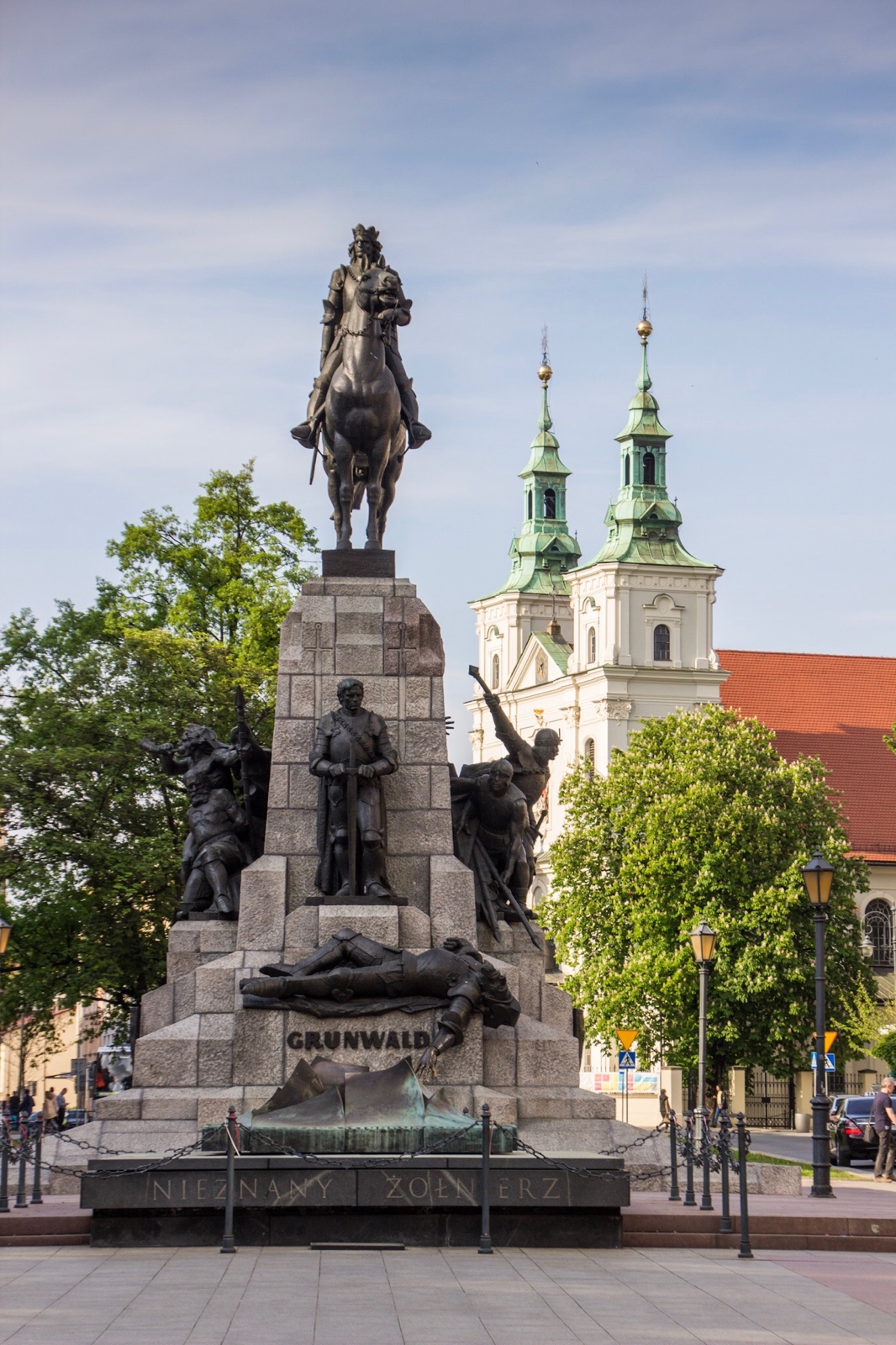
Grunwald monument, with dying Teutonic Knights
Back to the hotel for a rest and a cuppa, my thanks to Therese who had given me her leftover English Breakfast tea-bags before we left the boat. The hotels never give you enough tea bags! Tomorrow we have an earlier start again for a more sombre start to our day at Auschwitz


